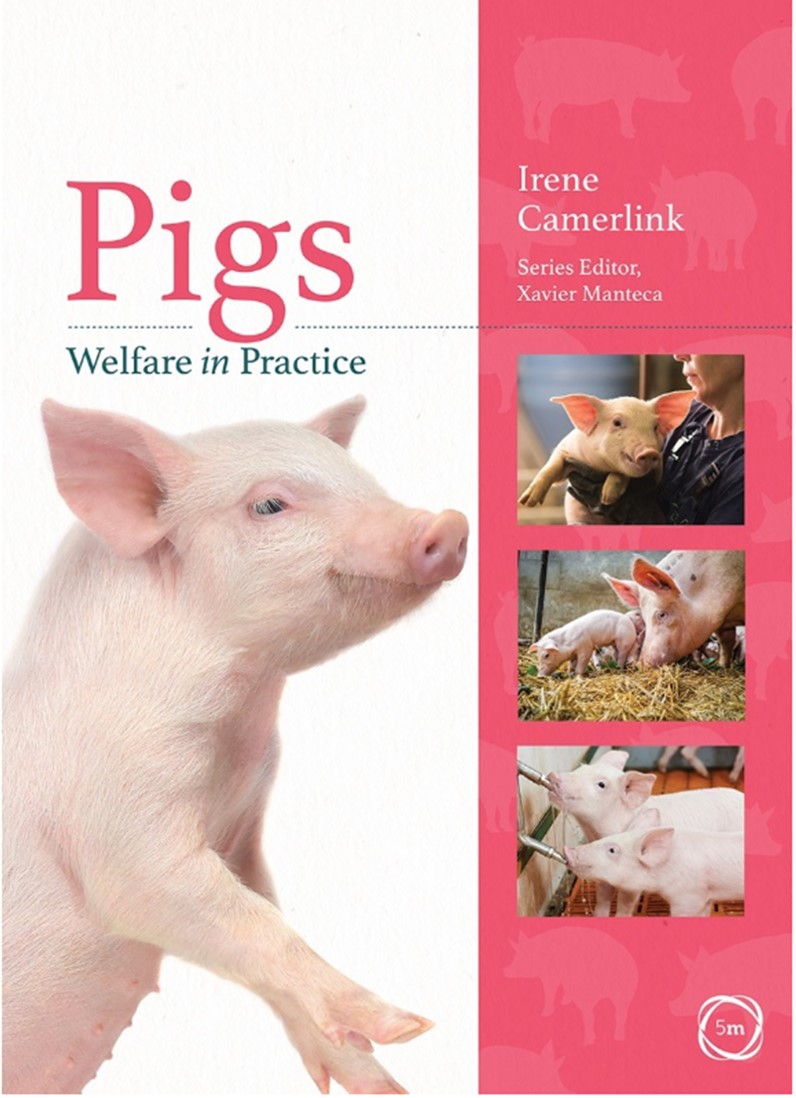



Practical solutions for improving welfare on commercial and small-scale farms
Dr Irene Camerlink discusses her new book, Animal welfare in practice: Pigs, and the benefits that practical welfare solutions can have for both pigs and profits.
© Irene Camerlink
Animal welfare has been well-documented in research, but a practical handbook for farmers, specifically on animal welfare, was missing. This gap is being filled by the book series edited by Professor Xavier Manteca, which addresses animal welfare for the main livestock species. The aim of the book series is to provide people in different countries, working with farm animals, with a tool to improve animal welfare through scientifically based advice. The series covers what is currently known about the welfare requirements of specific animal species and how to put this into practice. Each book in the series focuses on understanding animal welfare, the economic aspects of it, how it can be assessed, and methods to improve on-farm welfare.
The edition on pigs is the first of the series to appear from 5m Publishing. Animal welfare in practice: Pigs focuses on pigs kept for commercial husbandry mainly, but is also applicable to smallholders. Farmers, stockmen, smallholders, animal scientists, and agricultural students can benefit from the knowledge shared by over 50 prominent researchers, in a concise, easy-to-understand language.
Animal welfare in practice: Pigs explains the concept of animal welfare, along with the requirements of pigs kept for production purposes. The current state of pig welfare on a global scale is described, with the main developments in production and legislation. As economics is an important factor in decision-making on-farm, a full chapter is dedicated to how animal welfare can contribute to increased profitability and how you can assess the costs and benefits of improving welfare. This shows that improving animal welfare does not necessarily need to cost money, and benefits can in some cases outweigh the costs of implementations. Insight is also given in methods of assessing the welfare of pigs, whereby specific attention is given to so-called iceberg indicators. These can give an indication of underlying welfare beyond the key observable trait. Suggestions, based on scientific evidence, are given for how the welfare of piglets, growing pigs, sows and boars can be improved.
After each chapter, the theory can be applied to practice with the help of scoring forms. The scoring forms are also online available so that they can be printed and used by multiple stockpeople, or used to evaluate the welfare across multiple time points.
The book has an international perspective, with insights in the pig sector in Europe, Latin America, Asia, Australia and Africa. It has a wide applicability, but at the same time the book is written in a focused manner that gives specific suggestions on how to improve pig welfare in a practical manner.
As editor of the series edition on pigs, the book is inspired by my 16 years of working with pigs and visits to pig farms in many different countries. With this book I truly hope that more of the knowledge gained through research reaches practice. Animal welfare can really improve when we learn that welfare is more than just the legislation, societal pressure and the animals’ health, and in fact can be very profitable.









